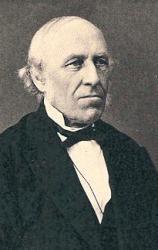Planning worship?
Check out our sister site, ZeteoSearch.org,
for 20+ additional resources related to your search.
- |
User Links
Person Results
Michael Praetorius

1571 - 1621 Adapter of "PUER NOBIS NASCITUR" in The Cyber Hymnal Born into a staunchly Lutheran family, Michael Praetorius (b. Creuzburg, Germany, February 15, 1571; d. Wolfenbüttel, Germany, February 15, 1621) was educated at the University of Frankfort-an-der-Oder. In 1595 he began a long association with Duke Heinrich Julius of Brunswick, when he was appointed court organist and later music director and secretary. The duke resided in Wolfenbüttel, and Praetorius spent much of his time at the court there, eventually establishing his own residence in Wolfenbüttel as well. When the duke died, Praetorius officially retained his position, but he spent long periods of time engaged in various musical appointments in Dresden, Magdeburg, and Halle. Praetorius produced a prodigious amount of music and music theory. His church music consists of over one thousand titles, including the sixteen-volume Musae Sionae (1605-1612), which contains Lutheran hymns in settings ranging from two voices to multiple choirs. His Syntagma Musicum (1614-1619) is a veritable encyclopedia of music and includes valuable information about the musical instruments of his time.
Bert Polman
Michael Praetorius
George Ratcliffe Woodward
1848 - 1934 Person Name: George R. Woodward Harmonizer of "PUER NOBIS NASCITUR" in The Cyber Hymnal Educated at Caius College in Cambridge, England, George R. Woodward (b. Birkenhead, Cheshire, England, 1848; d. Highgate, London, England, 1934) was ordained in the Church of England in 1874. He served in six parishes in London, Norfolk, and Suffolk. He was a gifted linguist and translator of a large number of hymns from Greek, Latin, and German. But Woodward's theory of translation was a rigid one–he held that the translation ought to reproduce the meter and rhyme scheme of the original as well as its contents. This practice did not always produce singable hymns; his translations are therefore used more often today as valuable resources than as congregational hymns. With Charles Wood he published three series of The Cowley Carol Book (1901, 1902, 1919), two editions of Songs of Syon (1904, 1910), An Italian Carol Book (1920), and the Cambridge Carol Book
George Ratcliffe Woodward
Ludvig Mathias Lindeman

1812 - 1887 Person Name: L. M. Lindeman, 1812-87 Composer of "ET BARN ER FØDT I BETHLEHEM" in Evangelical Lutheran Hymnary Ludvig M. Lindeman (b. 1812; d. 1887) was a Norwegian composer and organist. Born in Trondheim, he studied theology in Oslo where he remained the rest of his life. In 1839 he succeeded his brother as the organist and cantor of Oslo Cathedral, a position he held for 48 years up until his death. Lindeman was appointed Knight of the Royal Norwegian Order of St. Olav, and was invited to both help christen the new organ in Royal Albert Hall in London, as well as compose for the coronation of King Oscar II and Queen Sophie of Sweden. In 1883, he and his son started the Organist School in Oslo. Lindeman is perhaps best known for his arrangements of Norwegiam folk tales; over the course of his life he collected over 3000 folk melodies and tunes.
Laura de Jong
Ludvig Mathias Lindeman
H. I. D. Ryder

1837 - 1907 Person Name: Henry I. D. Ryder Translator of "A Boy Is Born In Bethlehem" in The Cyber Hymnal Ryder, Henry Ignatius Dudley, s. of the Rev. G. D. Ryder, who in 1836 became Rector of Easton, Hants, was born Jan. 12, 1837. On Dec. 8, 1856, he became a member of the Oratory of St. Philip Neri at Birmingham. He died Oct. 7, 1907. His hymns and translations are in his own Poems Original and Translated, 1882, in O. Shipley's Annus Sanctus, 1884, and in the Birmingham Oratory Hymn Book, 1906.
--John Julian, Dictionary of Hymnology, New Supplement (1907)
H. I. D. Ryder


 My Starred Hymns
My Starred Hymns


